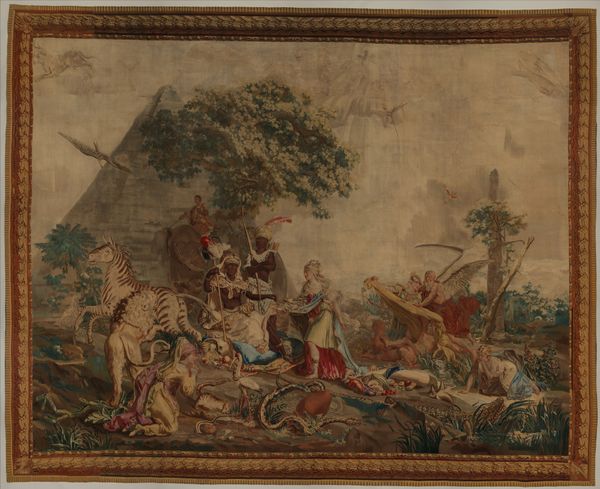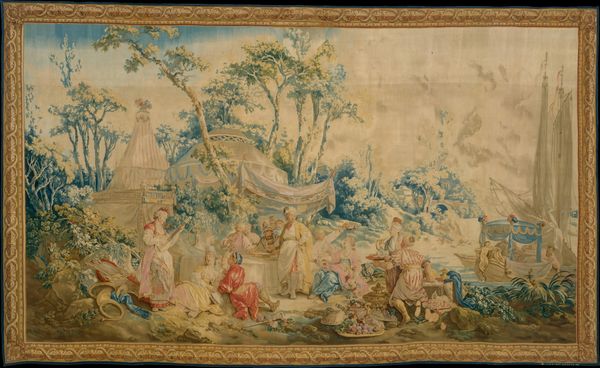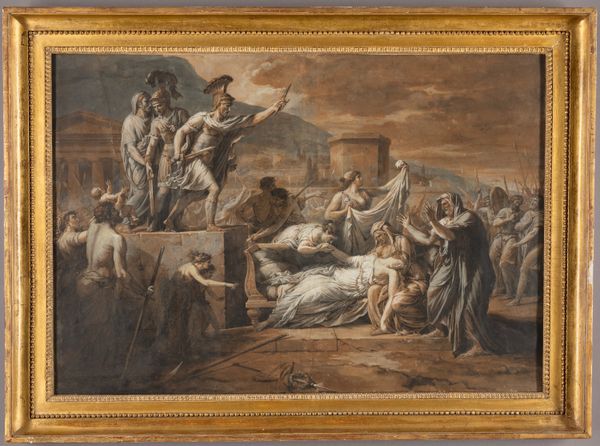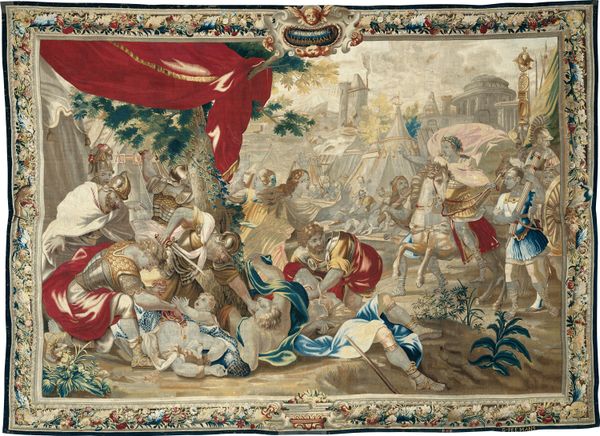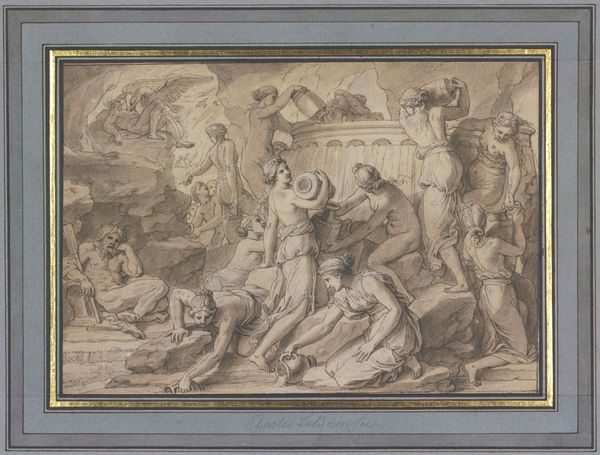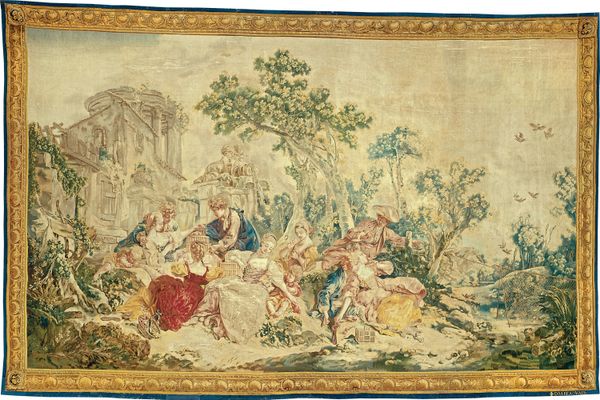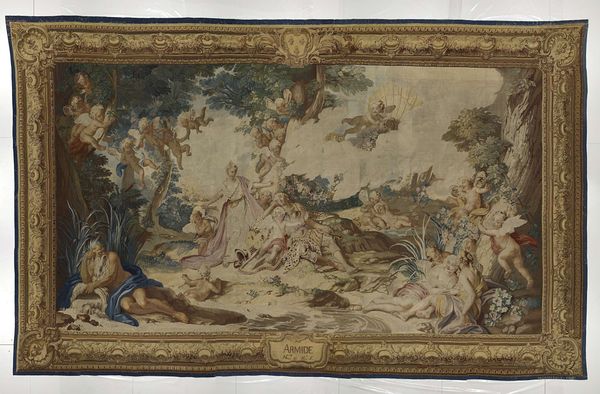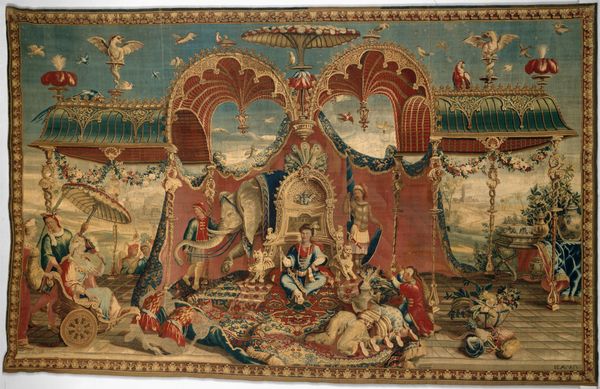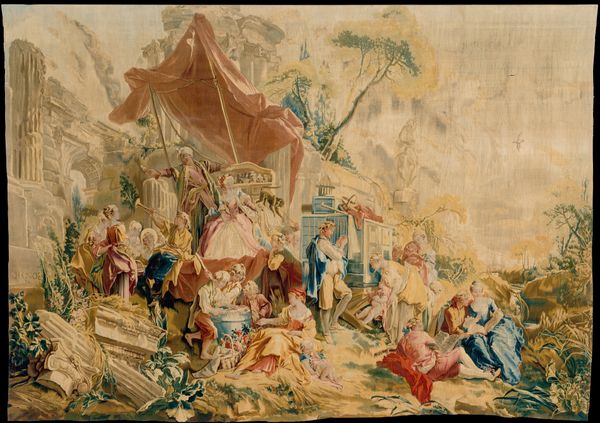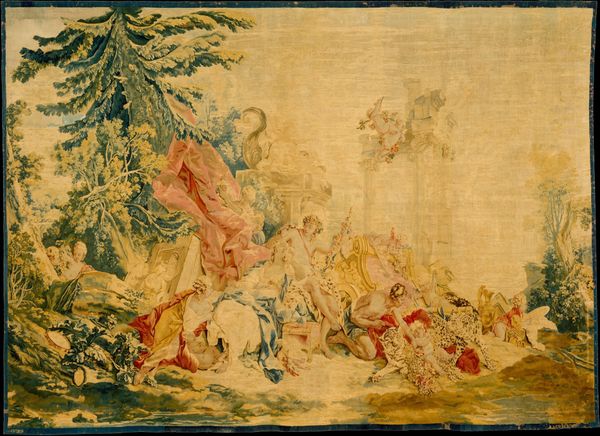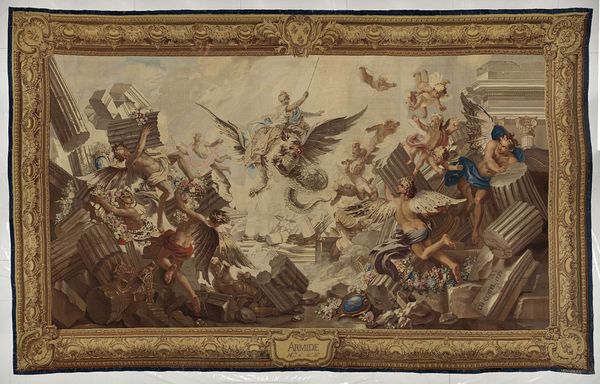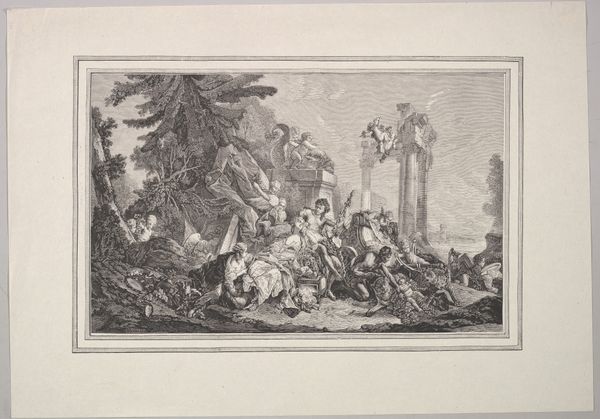
Asia from a set of The Four Continents 1781 - 1791
0:00
0:00
Dimensions: 12 ft. × 16 ft. 6 in. (365.8 × 502.9 cm)
Copyright: Public Domain
Curator: Before us hangs "Asia," part of Jean Jacques François Le Barbier's "The Four Continents" series, dating from 1781 to 1791. It's a tapestry, offering a richly textured surface. Editor: The composition immediately strikes me; there's an intricate layering of figures and architectural elements creating a sense of depth, but also a slight blurring, perhaps due to the medium. The pale colors, though somewhat faded, evoke a dreamlike quality. Curator: Indeed. Le Barbier’s manipulation of textile as a canvas allows for a unique softness, blurring distinct lines often found in painting. Consider the interplay of vertical architectural elements and the figures positioned on a diagonal axis; this contrast adds dynamism to the piece. Editor: The woman at the center, reclining regally, appears to represent Asia. She's surrounded by exotic elements: a camel, figures in what might be interpreted as oriental dress. To me, the imagery is fraught with cultural assumptions and colonial undertones. How do you interpret the symbols? Curator: The iconography employed reflects a Neoclassical vision of the continent. The architectural ruins hint at the past glories of Asian civilizations, while the objects – instruments, perhaps trade goods – represent the perceived riches and resources. This tapestry presents us a clear semiotic system, designed to evoke a specific understanding, or perhaps, a misunderstanding, of "Asia" in the 18th century. Editor: Right, and notice how that draped red cloth seems almost to act as a symbolic frame, emphasizing her position. But looking closer, it's impossible to ignore the Eurocentric gaze inherent in such a depiction. These visual choices are not neutral; they reveal the worldview of the artist and his era. Curator: The tapestry form, as a functional decorative object, furthers this context. It was likely intended for display within a European aristocratic setting. It speaks volumes about the consumption and aesthetic appropriation of the "Orient." The artist offers, and then seals shut, access to the culture he imagines. Editor: Ultimately, "Asia" serves as a poignant reminder of the power of visual language to shape perception and reinforce prevailing ideologies. Curator: Absolutely. Dissecting its formal strategies, while recognizing its historical biases, unveils the tapestry's layered meaning and invites deeper questioning.
Comments
No comments
Be the first to comment and join the conversation on the ultimate creative platform.
